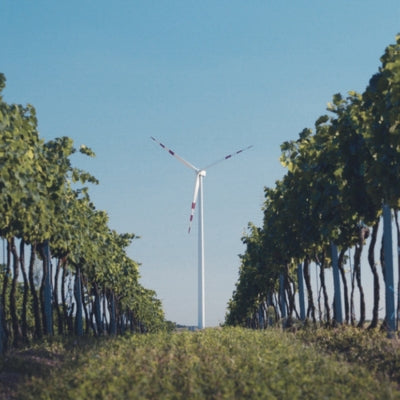
Vineyard threats: wind
In the fifth part of our series on vineyard threats and the impact of extreme weather, Westgarth Wines wine specialist Maurizio Broggi looks at the problems caused by wind.
The conditions for wind
Wind exerts a significant influence on coastal and exposed regions. Topographical features such as valleys can amplify these effects, creating funnel-like conditions as exemplified by the cold Mistral winds in the Rhône Valley. As a key component of terroir, vineyards can be planted and vines oriented to minimize or maximize the effects of it.
The impact of wind
While wind is often associated with negative impacts, it can also benefit viticulture. Specifically, it can mitigate the risk of spring frosts, provide a moderating effect in warm climates, and reduce the incidence of fungal diseases by inhibiting the accumulation of excessive humidity. Some evidence suggests that wind may also thicken grape skins, leading to more concentrated flavors.
Conversely, strong winds can have detrimental effects on grapevines. The cooling and desiccation caused by wind can diminish vine vigor and growth, leading to delayed ripening, reduced leaf area, and lower yields. Additionally, wind-stressed vines produce fewer, smaller bunches that ripen later in the season.
Increased water loss due to wind exacerbates water stress, making irrigation essential in regions with both strong winds and freely draining soils, such as New Zealand. Furthermore, wind can inflict physical damage to vines, including shoot breakage, leaf stripping, and damaging inflorescences. Wind may also contribute to the spread of diseases like powdery mildew and trunk diseases (e.g., Eutypa dieback), and may encourage soil erosion.
Preventative measures
To mitigate the adverse effects of wind, the process of vineyard establishment should prioritize sheltered locations and appropriate orientation of vine rows. Due to the longevity of vineyards and the evolution of terroir due to climate change, however, this is not a guaranteed permanent fix.
The strategic implementation of windbreaks, such as planting treelines to shelter the vines or divert wind away from them, or even manmade windbreaks such as netting, shelter cloths or windproof fencing, can provide essential protection.
Regions such as Salta and Mendoza in Argentina exemplify the challenges posed by severe wind conditions. The hot, dry, and powerful Zonda wind prevalent in these areas reduces humidity, induces water stress, and negatively impacts flowering and fruit set, ultimately hindering yield. Poplars are commonly employed as natural windbreaks in these regions, as well as various manmade barriers.
Other regions that endure persistent and powerful winds have developed specialized viticultural techniques. Lanzarote in the Canary Islands offers a prime example, where vines are cultivated in shallow pits surrounded by volcanic stones to create windbreaks.
Santorini in Greece faces relentless winds capable of inhibiting photosynthesis, disrupting flowering and fruit set, delaying ripening, intensifying water stress, and even destroying vines. In response, local growers have traditionally adopted a distinctive low-lying, ‘basket-shaped’ training system for Assyrtiko vines to provide essential shelter.
Want to read more? Take a look at some of our other blogs:



